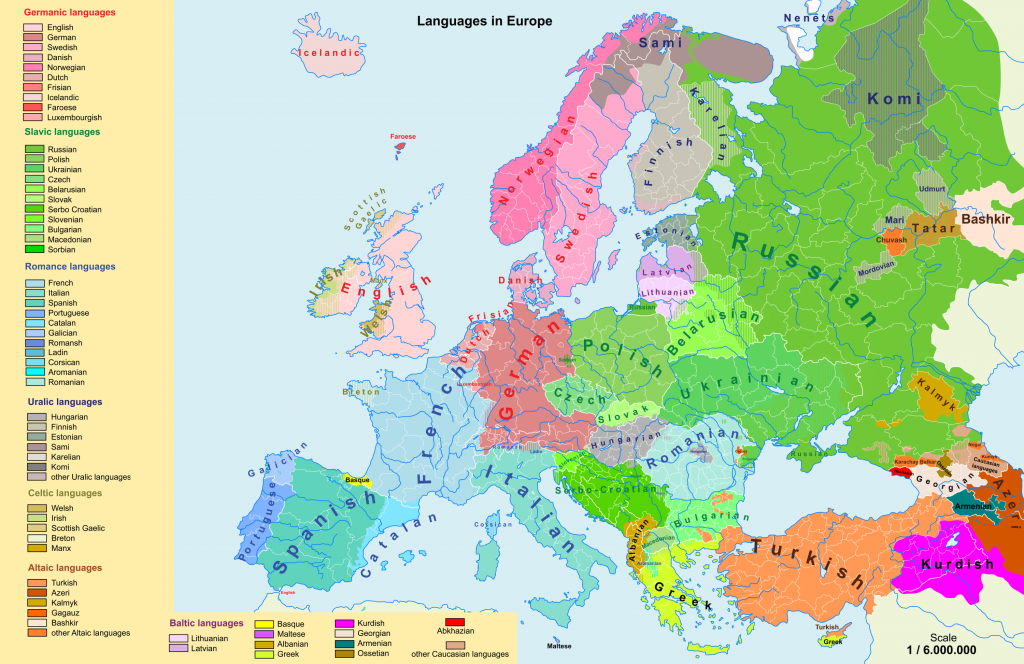
Linguistic Maps Of Europe Languages Of Europe
A detailed map of languages in Europe [5977 x 5255] And in Alsace very very few people (often the elderly) are still speaking alsatian (certainly the upper germanic language the map is talking about) This seems very inaccurate for German. There is a huge difference between Schwitzerdütsch and Bavarian, yet they have the same color.
FileSimplified Languages of Europe mapfr.svg Wikimedia Commons
Languages of Slovakia (with map) 1,351. -. Languages of Slovenia Quiz (with map) 850. -. Languages of Spain Quiz (with map) 1,045. -.

Most spoken endangered languages in Europe by country. Language map, European map, Geography map
Description. Simplified Languages of Europe map.svg. Map of main European languages simplified by following national borders in many cases. The map does not reflect the fact that many regions are bilingual, officially and/or in practice. In some cases, the area indicated for a language reflects where some of its speakers live but not.

Map Of Languages Spoken In Europe Draw A Topographic Map
Lithuania Luxembourg Netherlands Slovakia Sweden Argentina-European Union relations Armenia-European Union relations Australia-European Union relations Brazil-European Union relations Canada-European Union relations China-European Union relations European Union-NATO relations Georgia-European Union relations Iceland-European Union relations

Linguistic Map of Languages and Dialects in Europe priority given to dialects and indigenous
Finally, on the map of the third most spoken foreign languages, we can see that German is quite popular in most of Europe, and that Romance languages other than French are also moderately popular.
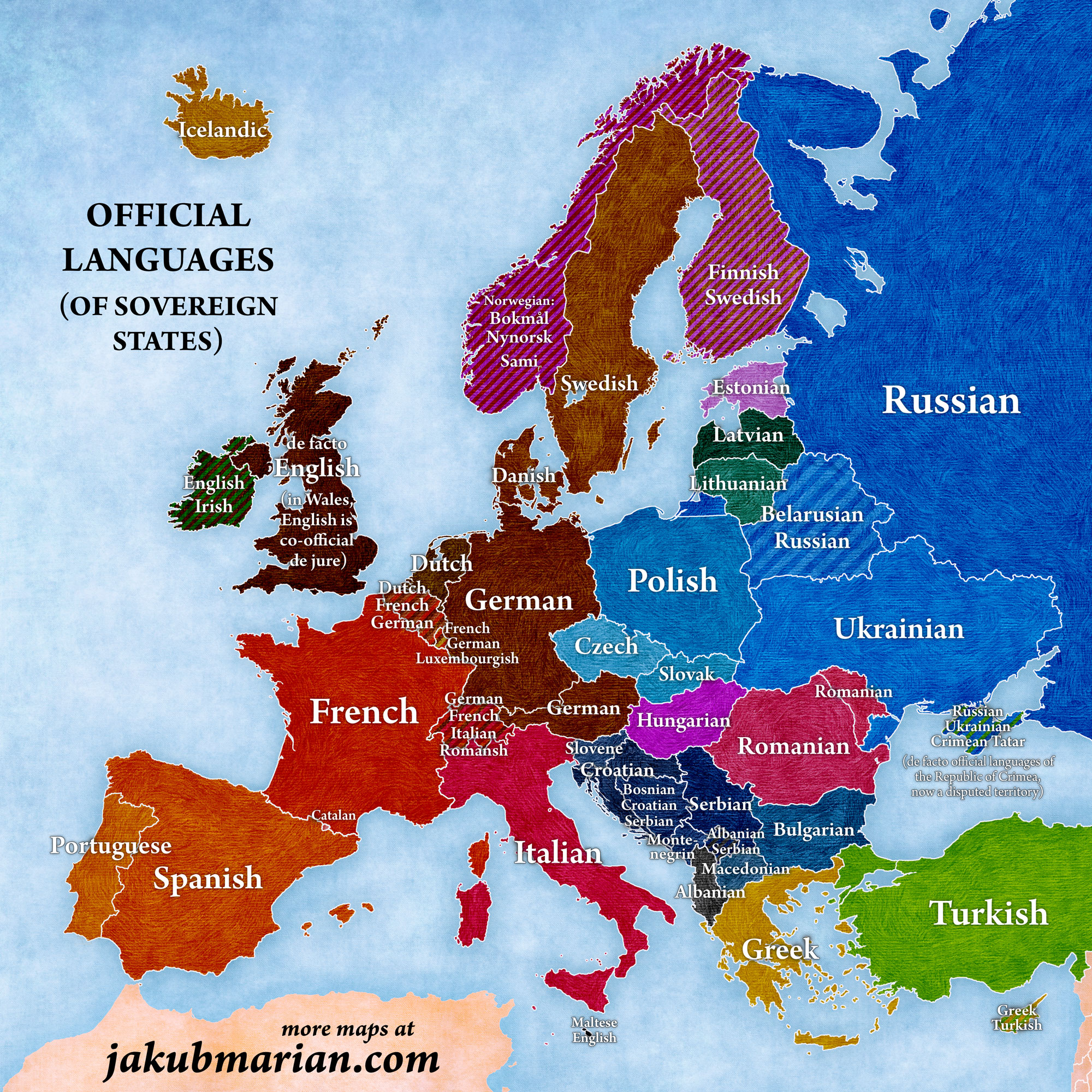
Official languages of European countries
Languages of Europe A color-coded map of languages used throughout Europe. There are over 250 languages indigenous to Europe, and most languages of Europe belong to the Indo-European language family. [1] [2] Out of a total European population of 744 million as of 2018, some 94% are native speakers of an Indo-European language.

a map of europe with different languages on it
There are over 750 million people in Europe, if we assume Europe goes up to the Ural mountains, and down to Georgia, excluding the Asian part of Turkey. About 94% of Europeans speak languages from the enormous "Indo-European" (IE) language family. The "Indo" part shows that it also has an Eastern branch, which includes Hindi and Persian.
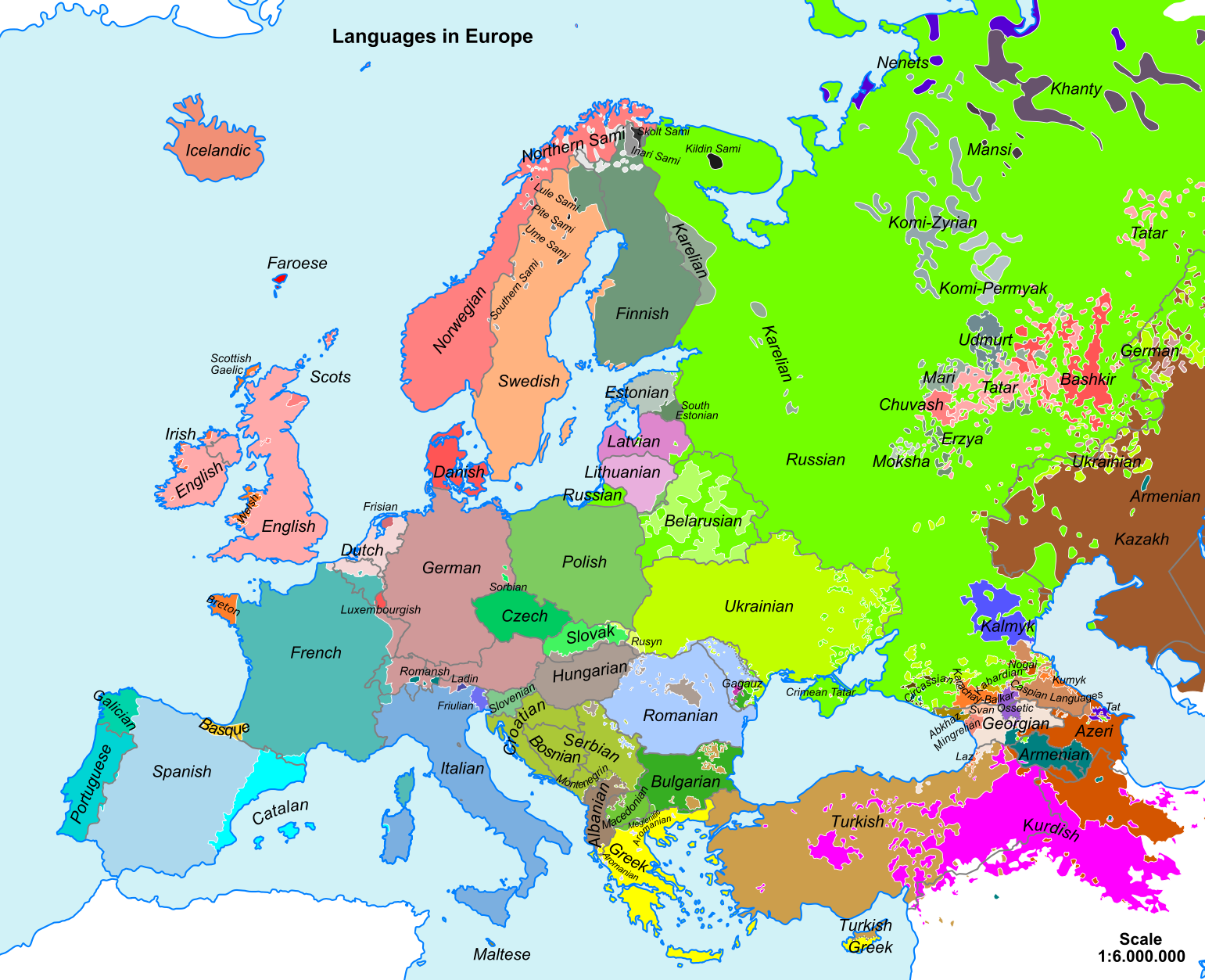
FileSimplified Languages of Europe map.svg Wikimedia Commons
Use the maps Country Borders in Europe and Dominant Languages of Europe to answer the questions below. 1. Shade regions on your Country Borders in Europe Map where language differences and country borders do not match up. These are possible conflict areas due to language differences. Below, list the largest possible conflict areas that you shaded.
European Languages According To The Dutch Brilliant Maps
Countries of Europe: Albania · Armenia ‡ · Austria · Azerbaijan ‡ · Belarus · Belgium · Bosnia and Herzegovina · Bulgaria · Croatia · Cyprus ‡ · Czech Republic · Denmark · Estonia · Finland · France ‡ · Georgia ‡ · Germany · Greece · Hungary · Republic of Ireland · Italy · Kazakhstan ‡ · Latvia · Lithuania · Luxembourg · Moldova · Montenegro · N.
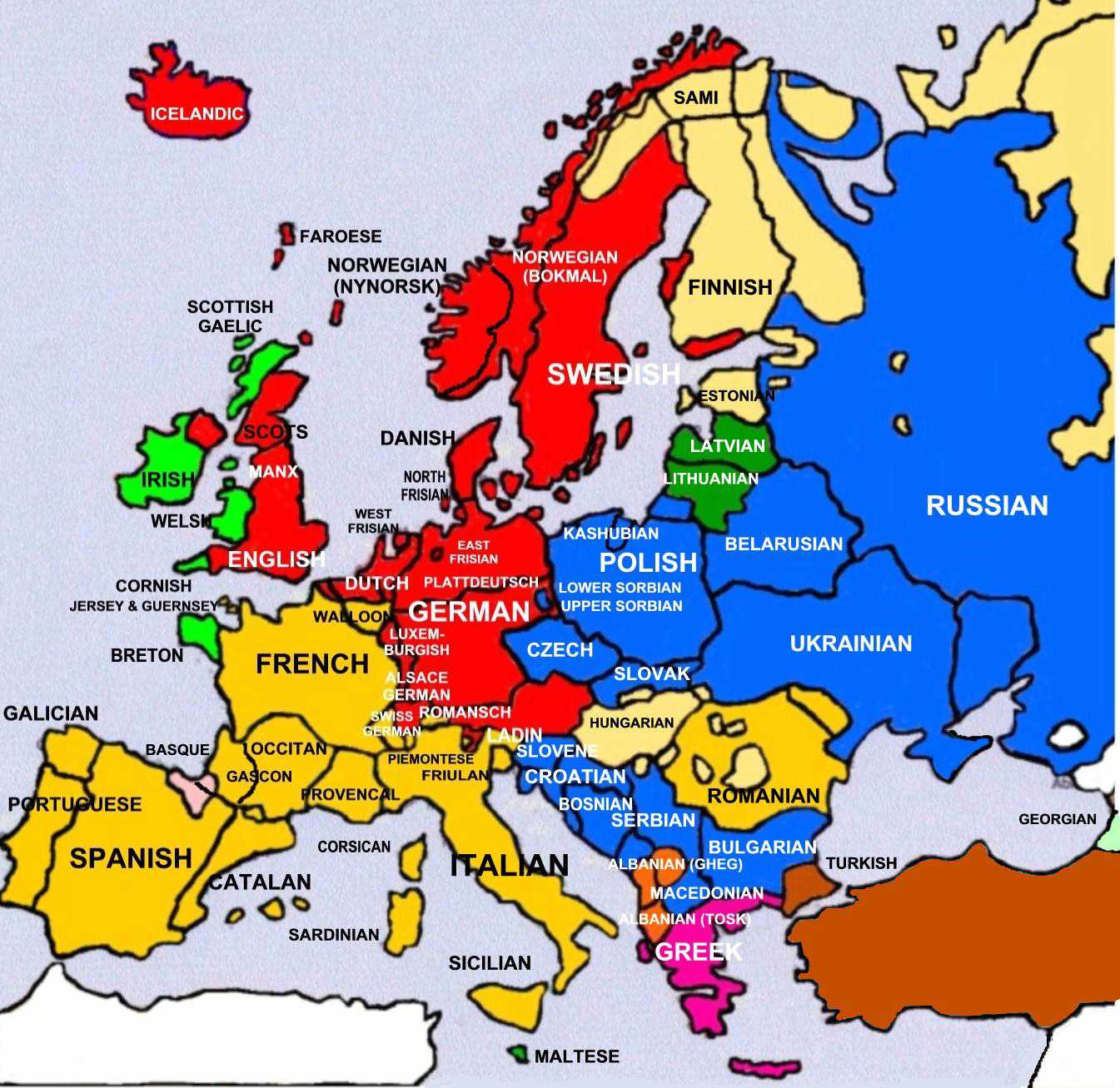
Languages of Europe
Map showing minority/majority languages.Image by jakubmarian.com. Language Families Indo-European It's estimated that 94% of Europeans speak languages from the "Indo-European" (IE) language family, which has many subfamilies, such as Romance languages, Germanic languages, Slavic languages and Celtic languages. The "Indo" part shows that it also has an Eastern branch, indicating.
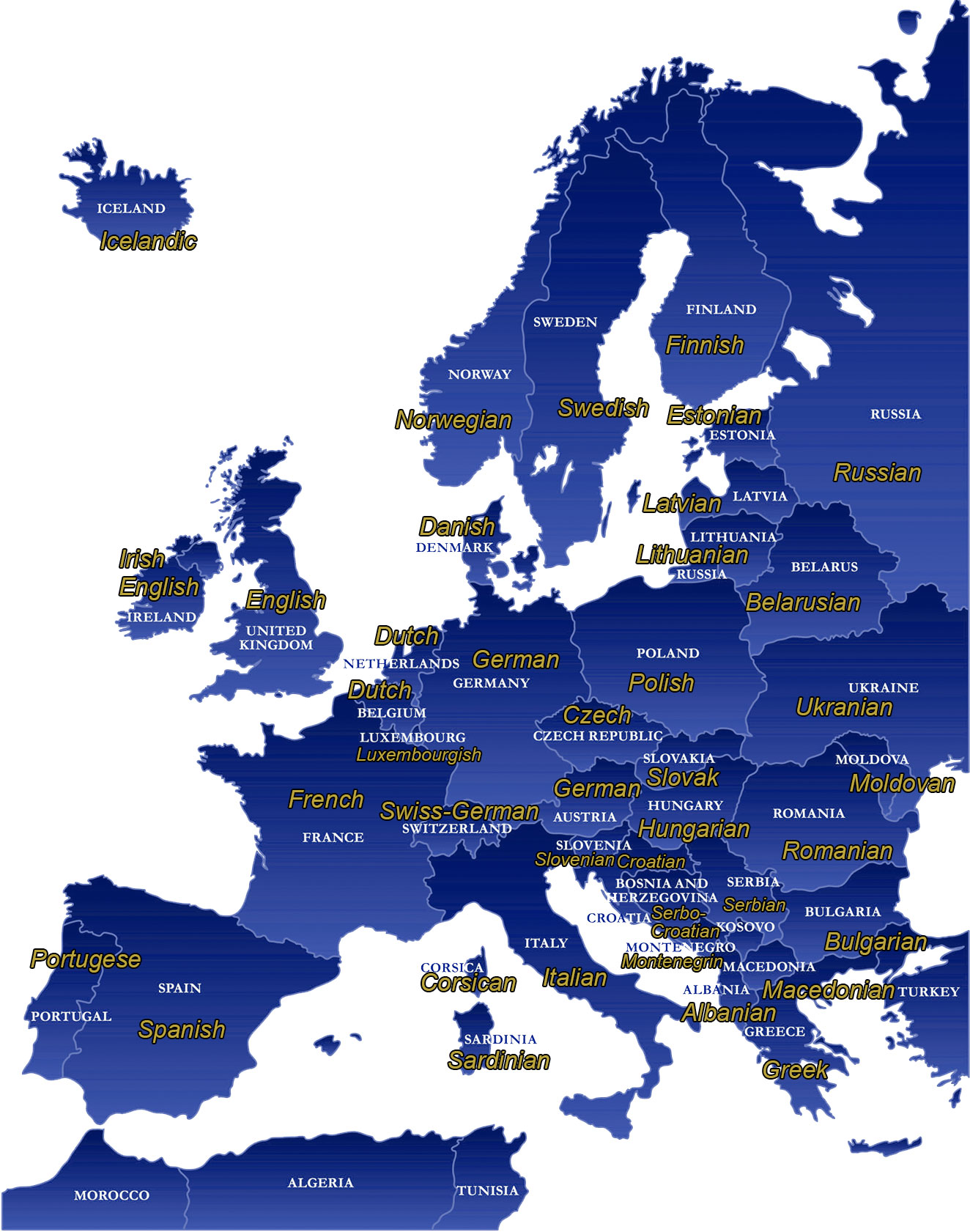
Map of Official Languages of Europe
However, the EU, the European union of 28 member states has 24 official languages, but in practice only two are used most often: English and French.
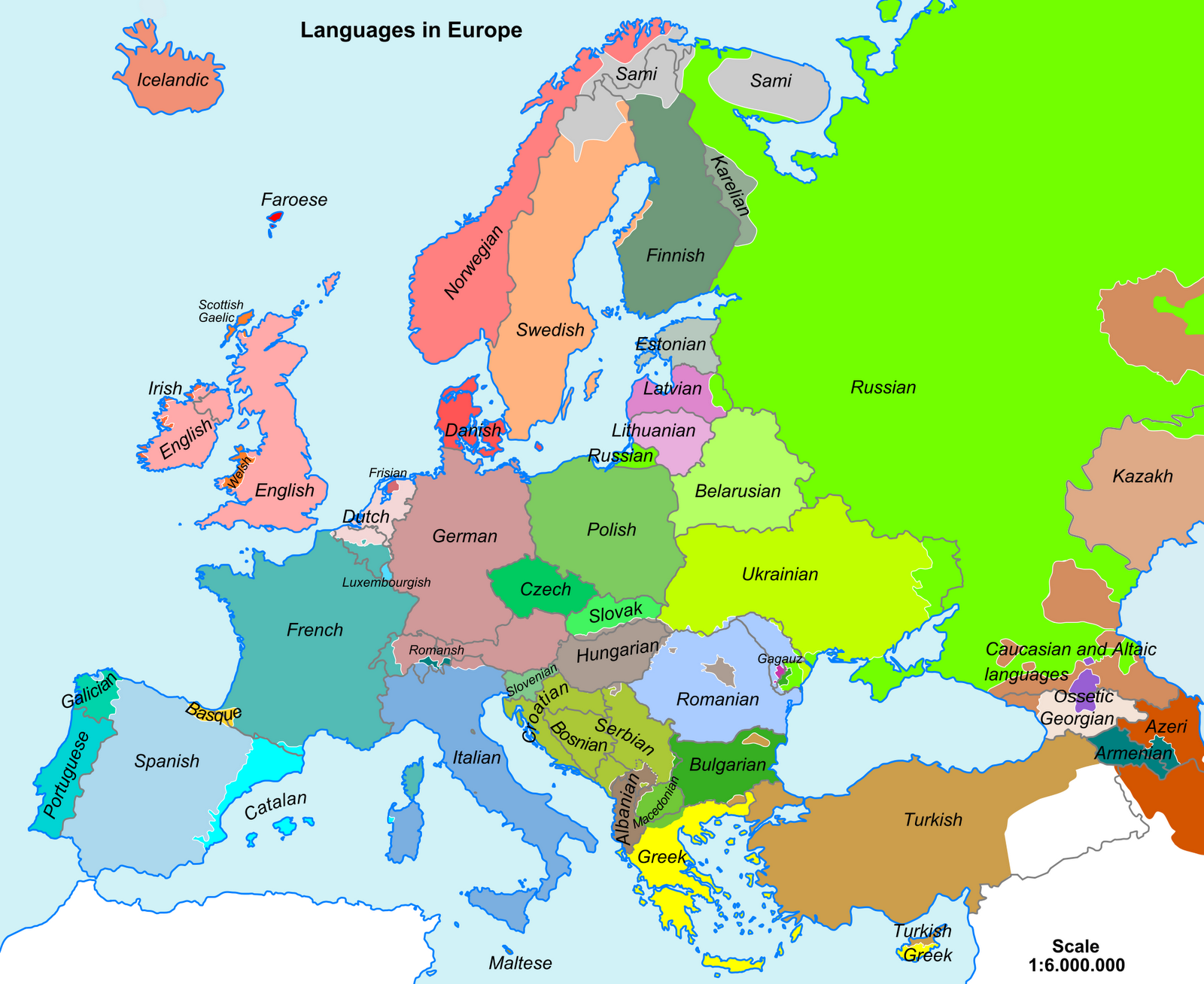
Languages in Europe [326 x 327] MapPorn
Below is the map poster of European languages and dialects created by eurominority.eu. The lexical distance among the languages of Europe The map below presents the lexical distance - that is, overall vocabulary difference - between the major languages of Europe. The size of each circle depicts the number of speakers for that language.

Linguistic Maps Of Europe Languages Of Europe
Albanian; Finno-Ugric languages: Finnish, Hungarian, Estonian; Baltic languages: Latvian and Lithuanian; Celtic languages: Irish, Breton, Manx, Cornish, Welsh, Scottish Gaellic. Statistics by number of native speakers worldwide (top 5 for each linguistic family): Romance languages Spanish (410 million speakers); Portuguese (250 million speakers);
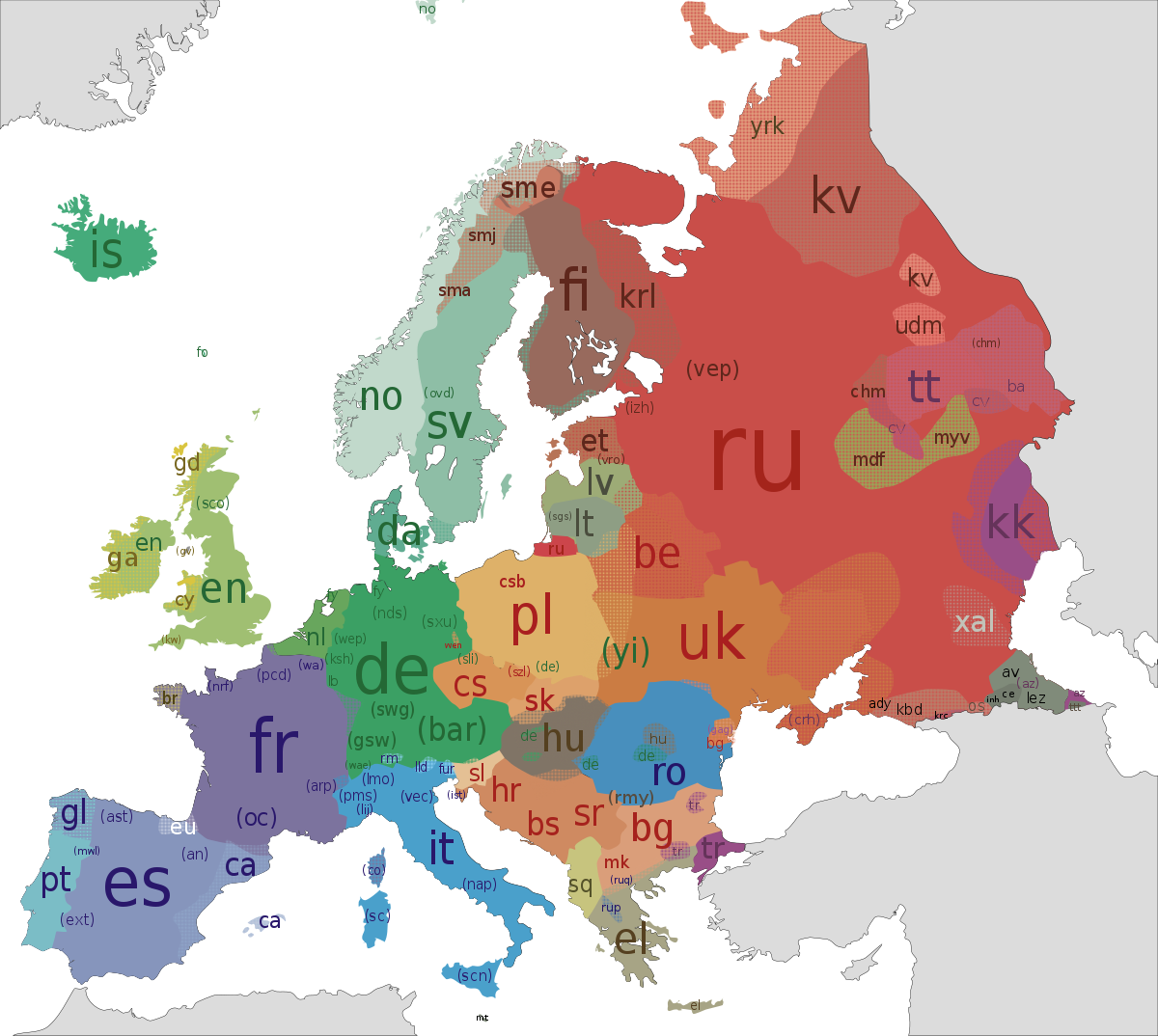
Languages of Europe Wikipedia
Languages of Europe. North Germanic West Germanic. Celtic. Western Romance Italian / Southern Romance. Eastern Romance Basque. East Slavic West Slavic. South Slavic. Baltic. Greek Albanian Armenian Iranian.

Cultural & Political maps of Europe Europe Guide Eupedia
The Slavic branch of the Indo-European language group includes Russian, Ukrainian, Polish, Belarusian, Czech, Bulgarian, Croatian, Serbian, Slovak and more. The most widely spoken of them is Russian, which is the world's eighth most spoken language by native speakers (154 million people speak Russian as their first language).

Linguistic Maps Of Europe Languages Of Europe
1. Russian Russian is the most spoken language in Europe, with roughly 160 million native speakers. It's the official language of Russia, Belarus, Kazakhstan, and Kyrgistan, and some other post-soviet countries: Ukraine, Moldova, Latvia, Estonia, Lithuania, Armenia, Azerbaijan, Georgia, Tadjikistan, Uzbekistan.